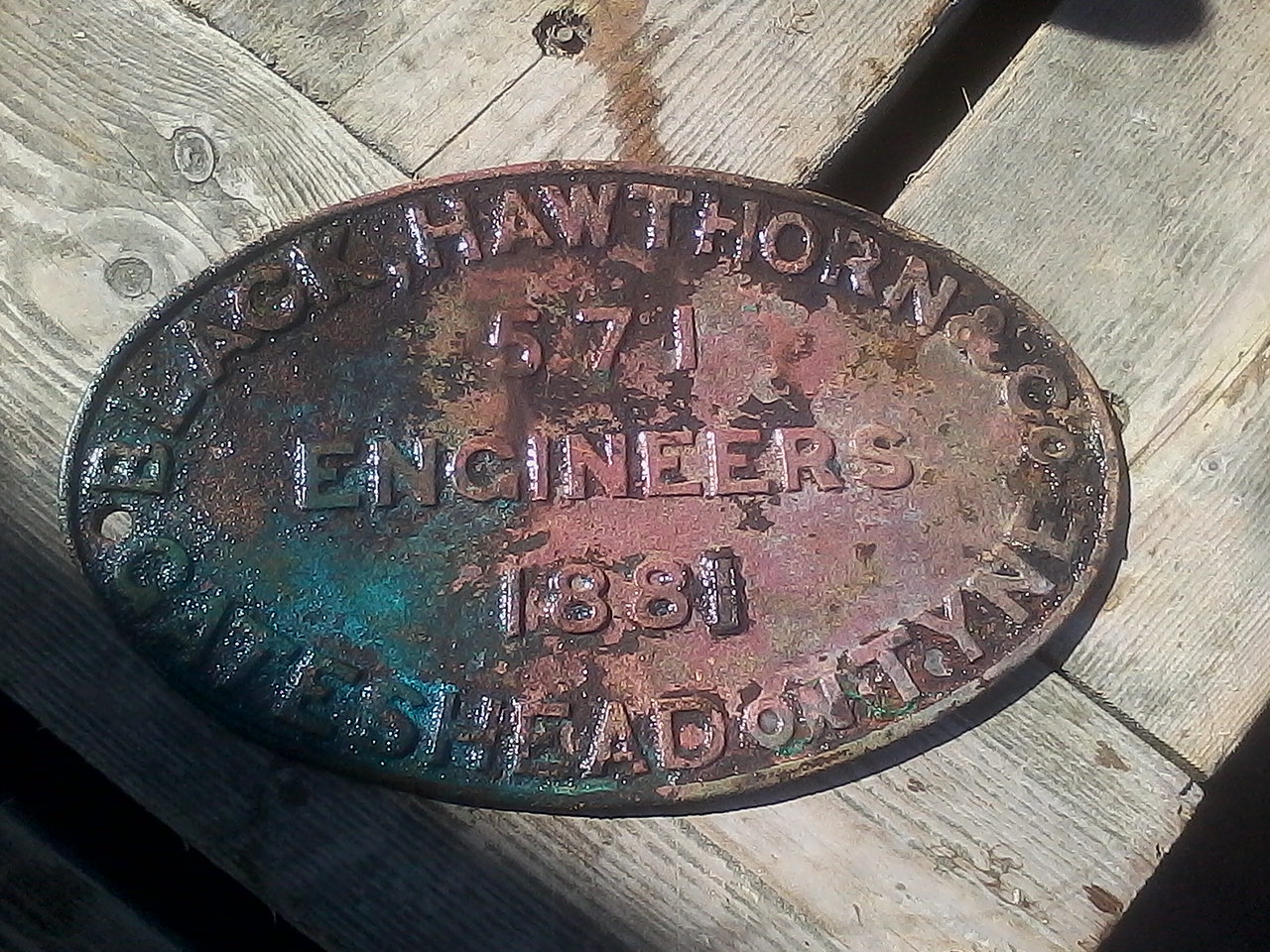A few weeks ago, we received an email from Anton Van Drumpt. Anton is part of a crew of Dutch divers who dive wrecks in the North Sea from the former Royal Navy tender Lamlash. They had been diving on an unidentified wreck off the coast of Holland known only by its wreck number of HD 2211, and recovered an object off the wreck which they hoped would help to identify it. The plate is pictured below.

It is a works plate from Black, Hawthorn & Co. dating from 1881. Black, Hawthorn were a steam locomotive manufacturer in Gateshead, who manufactured locomotives between 1865-1896. They specialised in producing industrial tank engines (we even have one of their products in our collection, Bauxite – built in 1874). So Anton quite logically thought the National Railway Museum might be able to identify the plate.
We do hold original records for various independent manufacturing companies in our archives and we also hold copies of some that are held elsewhere. Unfortunately, these don’t include the records for Black, Hawthorn. However, in our library we do have a copy of the Black, Hawthorn Works list, published by the Industrial Locomotive Society and compiled from various original sources.
From this publication I was able to identify the engine that the plate came from. Of course, it turned out this wasn’t a steam locomotive at all but a steam engine made to power a ship. Like many other steam locomotive manufacturers, Black, Hawthorn also produced some stationary and marine engines. According to the list, the order book entry for no. 571 was for a “Marine engine & boiler & remove old engine” on 7th May 1880, and the customer was the “Earl of Durham for S.S. Countess of Durham”.
The information we provided led to further further research by the divers, which revealed that the Countess of Durham was a 539-ton freighter built in 1855 by the shipyard of Richardson, Duck in Stockton-on-Tees. It was used to carry coal produced by the Countess of Durham’s mines in the North East of England. However it was stated by some nautical sources that the Countess had foundered on Goodwin Sands in the English Channel in a terrible storm during October 1881. The crew had been picked up by the fishing smack Reliance and taken to Ramsgate.
This did pose the question of how a ship that was believed to have been wrecked close to Ramsgate could have been found over 60 miles away near the Dutch Coast! Had the ship floated off Goodwin Sands during the storm and ended up wrecked across the North Sea? Or had parts of the nearly new engine been salvaged and used on another ship?
Further research by the Lamlash divers turned up a newspaper report quoting Lloyds telegrams that indicated that the Countess of Durham had been en-route to Amsterdam and was abandoned off the Dutch coast and the crew picked up by a fishing smack and taken to Ramsgate. It would appear that the Goodwin Sands report was something of a red herring!
Further evidence was provided by the fact that the cargo on the wreck was coal. So it would seem that the mystery of the wreck has been solved and final resting place of the Countess of Durham is indeed 30 miles off the Dutch coast.
It isn’t every day that we play a part in identifying a shipwreck!